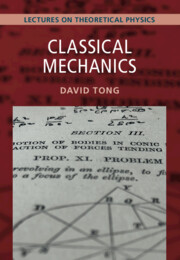Refine search
Actions for selected content:
4 results in Lectures on Theoretical Physics

Quantum Mechanics
- Lectures on Theoretical Physics
-
- Published online:
- 27 June 2025
- Print publication:
- 19 June 2025
-
- Textbook
- Export citation

Electromagnetism
- Lectures on Theoretical Physics
-
- Published online:
- 26 June 2025
- Print publication:
- 19 June 2025
-
- Textbook
- Export citation

Classical Mechanics
- Lectures on Theoretical Physics
-
- Published online:
- 26 June 2025
- Print publication:
- 19 June 2025
-
- Textbook
- Export citation

Fluid Mechanics
- Lectures on Theoretical Physics
-
- Published online:
- 26 June 2025
- Print publication:
- 19 June 2025
-
- Textbook
- Export citation
